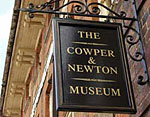|
The Cowper and Newton Museum
|
|
Virtual Tour: The Newton Room
|
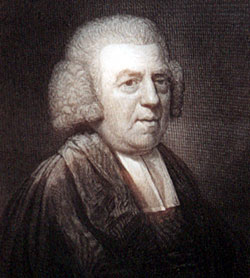 |
John Newton 1725-1807
Author of "Amazing Grace" and over two hundred other Olney Hymns, he persuaded Cowper to move to Olney.
Born in Wapping, London, like Cowper, his mother died when he was 6 years old, and he had a rather unhappy life when sent away to school.
Newton served on board his father's ship at the early age of eleven, sailing to the Mediterranean.
|
|
|
While on shore leave in England, he met Mary Catlett who was 14 and too young to become his wife, but who captivated him and stayed in his thoughts throughout his adventures.
Due to staying overlong at her house on one of his visits, he was caught and pressganged as an ordinary seaman on HMS Harwich.Subsequently he was exchanged for a merchant seaman and so returned to a life in maritime trade.While working on the West African coast buying slaves, he had an argument with his employer and was "enslaved" himself, working on a plantation and receiving brutal treatment at the hands of his owner's wife. He was eventually rescued in 1747 and returned to England on the 'Greyhound'. Once more at sea in 1748, he was caught up in a violent storm which led to his first prayers since his mother's death and started the spiritual journey that would culminate in his Evangelism. In 1750 he finally married his childhood sweetheart, Mary Catlett whom he called 'Polly' and with whom he later lived "in harmony and.......... with ever increasing affection!".
|
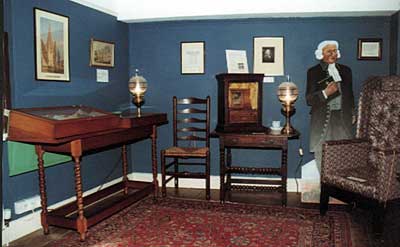 |
The Newton Room |
|
| Trinket Box probably brought back from Paris by John Newton returning from one of his voyages. Later, it was given to his niece, Mrs Smith, née Catlett, who lived with him until his death.
Size:12" x 10" x 6" .
|
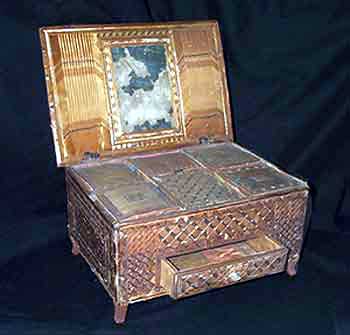 |
|
| Made from decorated and varnished rattan with compartments, the box gives the impression of intricate marquetry.
There is some controversy about the origins of this trinket box, as the workmanship is similar to that of Napoleonic prisoners of war. It has been suggested that it was bought by Newton and his niece Mrs Smith when they toured the prisons in the Southampton area c.1800.
There are numerous books and letters relating to Newton in this room. One book is an account of episodes in his life, put down in letters and then published. There are letters to Mary Newton; some written during his voyages to Africa and others from his years in Liverpool. Other letters include those from Newton to Josiah Symonds .
|
 |
Books on display include:
'Letters to a Wife' and 'Letters on the Church Catechism' . There are diaries - one has the inscription on the flyleaf 'A present from the author to himself 10th October 1797' - his printed hymn books, Sermon Notebook and his Bible, shown here and below.
|
|
| Newton's Bible |
 |
|
After his marriage, his career in the slave trade continued. Illness made it necessary for Newton to leave the sea and he took work as Surveyor of Tides (or Customs Officer) at Liverpool. His desire to enter the Ministry grew stronger. Newton initially had trouble in his quest for ordination and so took to preaching around the country . Eventually he attracted the patronage of Lord Dartmouth, was ordained and appointed Curate of Olney. While in Olney he held a weekly Bible meeting the popularity of which was such that it soon had to move from the Vicarage to The Great House. Newton was a regular visitor to Orchard Side and collaborated with Cowper in creating the famous Olney Hymns. A man of great spiritual stature and humility, his warmth and sincerity shone through. His Times obituary stated
His unblemished life, his amiable character, both as a man and as a Minister, and his able writings, are too well-known to need any comment.
|
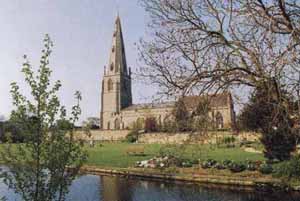 |
The Parish Church of St. Peter and St. Paul, Olney, where John Newton preached for the whole of his time in Olney. |
|
John Newton's Pulpit
in Olney Parish Church |
 |
|
|
You are in the Newton Room
Click on the hare to continue the guided tour

or use the floorplan to move to another room
|
|
|
|
|
|
|
